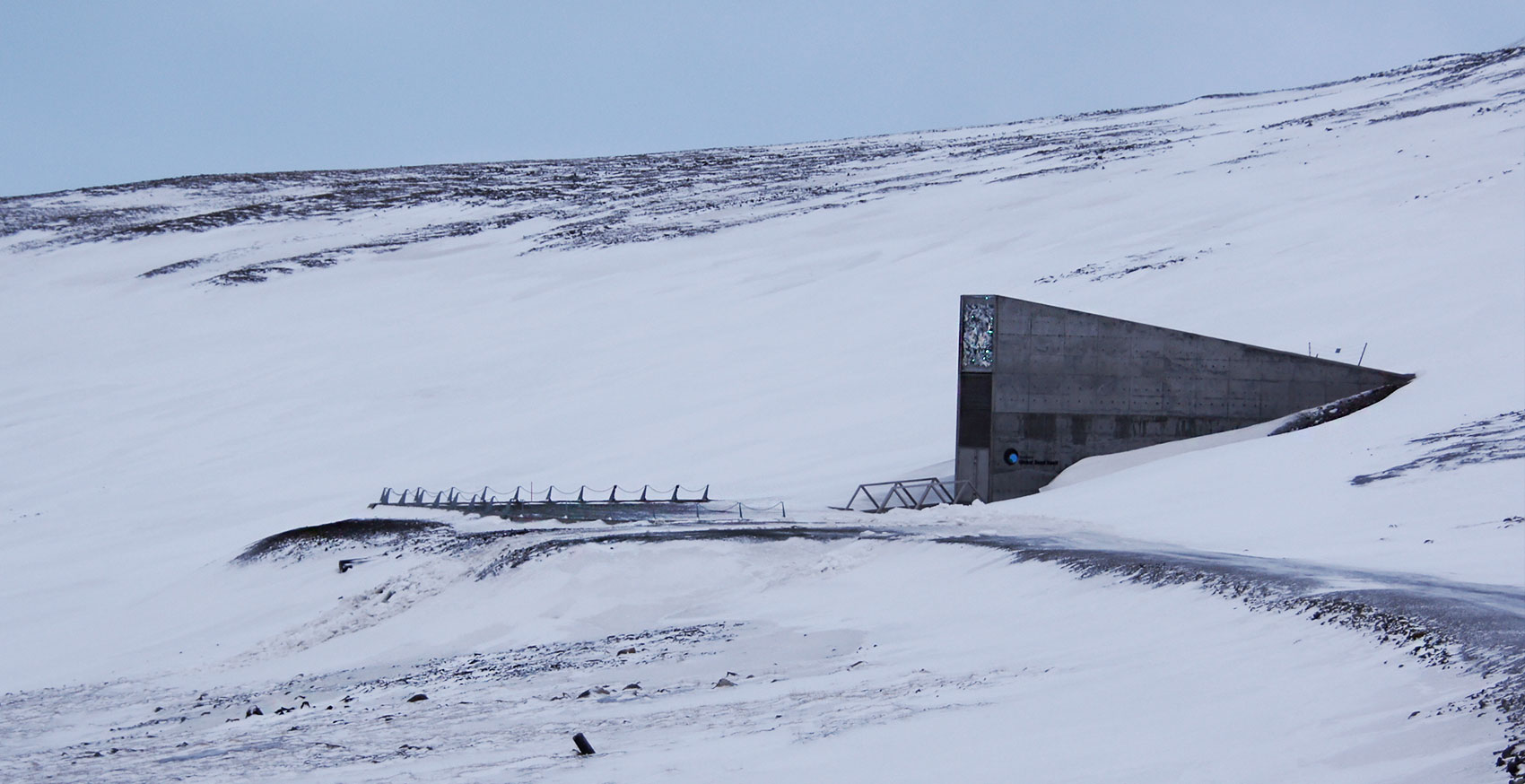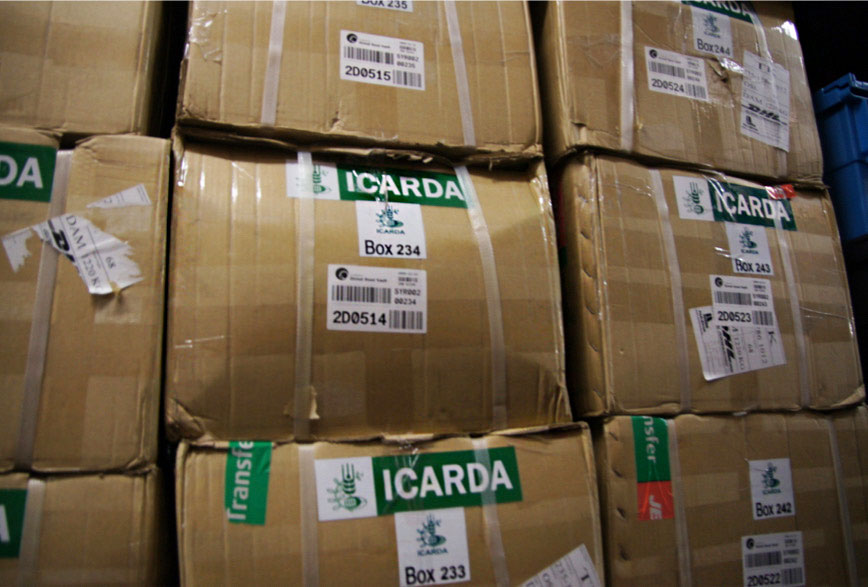

The theme of Earth 2021, Restore Our Earth, is a call to action to do more to address the climate crisis and restore our remaining fragile ecosystems, through both natural processes and technological and social innovation.
Dr. Tracey Heatherington, associate professor of anthropology at UBC, is an environmental anthropologist whose research focuses on the political ecology of nature conservation. She studies biodiversity initiatives, such as the Svalbard Global Seed Bank in Norway. We spoke with Dr. Heatherington about her research on the role of science, technology and social institutions in addressing climate change and supporting more sustainable agriculture — and how humanities thinking can help set us on the right course.
What is the Svalbard Global Seed Bank and what sparked your interest in studying it?
Svalbard is a back-up system for major seed collections around the world, which are like living libraries of the biodiversity needed for agriculture. The vault in Svalbard keeps samples for other seed banks, in case something happens to one of them, like the tsunami in the Philippines that destroyed some collections a few years ago, or the war in Syria. The scientists at the ICARDA seed bank in Syria stayed as long as they could to back up pretty much everything at Svalbard, before they had to cease operations. Because of those efforts, they were able to get the seeds to re-establish the working collections, after moving operations to another location. I was able to view the boxes of seeds from ICARDA at the Global Seed Vault in 2015.


As an environmental anthropologist, I am interested in how we collectively imagine the role of science, technology and social institutions in addressing global climate security. My research focuses on initiatives for biodiversity conservation, so seed banks are quite intriguing.
I think the whole world was fascinated when the Svalbard Global Seed Bank opened in 2008, and every year when new deposits are made, it helps open different cultural visions of the past, present and future of agriculture. For example, when Kenyan environmental activist Wangari Maathai brought seeds from African Rice to the vault in 2008, and the Cherokee Nation deposited its own seeds in 2020, it was deeply evocative. The heritage seeds in the vault have particular cultural histories, and today, many are still living components of the communities in which they evolved. It matters how we shape our laws and institutions to protect these multispecies communities.
Has the COVID-19 pandemic generated additional interest in seed banking due to concerns about food security and crop pandemics?
The pandemic has dramatized all the food security issues we face today. Luigi Guarino and Charlotte Lusty, scientists at the Global Crop Diversity Trust, remind us that “our crops are just as vulnerable to a multitude of pathogens as we are to the coronavirus.” Changing climates are altering the conditions of crop production in both subtle and dramatic ways, including changes in rainfall and seasons, so we have new pests and blights that develop or move in from other areas. We also have more weather extremes and natural disasters that cause crop losses.
But the pandemic hasn’t just highlighted the threat of biodiversity loss and extinctions that could affect farming systems — it has also revealed the deep social inequalities embedded in the growth of industrial agriculture. Most of the world’s farms are small, and family-run. They face rapid environmental change along with colossal economic pressures. That is a food security issue, too. Now consider the agricultural workers, often migrants, who are the hidden labor force. In many countries, we’ve seen them particularly exposed to contagion as a condition of their work environment. People who pick the fruits and vegetables on our tables have suffered for it, and that is an unforgivable violence embedded in the food system. The pandemic has made us aware of that.
Your research explores our cultural fascination with seed banking and the future of agriculture. What can we learn from science fiction and post-apocalyptic narratives that take on these issues?
There’s certainly something romantic about having the world’s seeds up at Svalbard. But there seems to be a lot of misunderstanding around what the repository is for. For example, the common narrative about how we might survive a nuclear war or other global disaster and “restart agriculture” with samples from Global Seed Vault is so focused on the importance of seed, it forgets everything else you need for successful agriculture: clean water, uncontaminated soil, healthy soil microbes, pollinators, favourable climate conditions, and people who know how to cultivate, harvest and use the crops.
That kind of survivalist story exposes the magical thinking that science and technology will generate a silver-bullet solution to climate change. The real solutions are multi-faceted.
How can humanities research help us mitigate and adapt to the climate and biodiversity crises?
The environmental humanities give us the means to consider history, and reconsider our own assumptions. They are vital to self-reflection and cultural critique, and they offer the means to challenge systemic biases of race, class, gender, and colonialism. Historically, seed banks have been very technocratic, and tied into ideas about modernization and progress. But one of the neat things about Svalbard is that it has inspired or challenged a lot of people to try saving seed again.
That was something many stopped doing after the commercial seed companies came out with hybrids that were hardy and productive, but will not breed true if you save the seed. Today, there are a growing number of fantastic community initiatives and organizations with small-scale seed banks. These local-level conservation efforts are just as innovative as what is going on at the international level. Not only do they keep plant biodiversity alive and constantly adapting to emerging climate conditions in real places, they also keep cultivation practices alive in the community. They help people transmit experience across generations. Qualitative research helps us see things from this grounded perspective. Humanistic approaches are essential to help us think holistically about the different cultural and social dimensions of agricultural systems.
Because it’s not only about the seeds themselves: it’s about the stories, the memories, the songs and literature, the heritage, the imagination and heartfelt connections to the much-more-than-human world around us. It’s about the things we share and the bonds between us, as well as the inequalities among us. Many of our colleagues in the natural and applied sciences have been inspiring leaders in the study of climate, environment, agriculture and sustainability, but a fresh synthesis is essential, and it’s not enough to “add humanities and stir”. We need truly multidisciplinary insights—a change of paradigm—to understand the complexities of the “Anthropocene,” an age in which the precarious conditions that we ourselves have brought into being now converge to challenge us.
Dr. Tracey Heatherington is currently organizing the Un/Predictable Environments: Politics, Ecology, and Agency conference, taking place online from May 20-21, 2021. The conference will explore how we try to predict and avoid socio-ecological harm and disasters, and will include presentations by artists, activists and academics from around the world, as well as events hosted by UBC’s Environmental Humanities Working Group. The conference is free and open to the public with advance registration.


